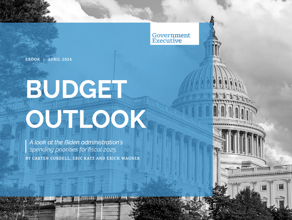Can Creativity Be Learned?
Prevailing theories on creativity focus on methodology, or amount of practice. But new studies suggest artistic talent may be more hard-wired than we thought.
At 2 a.m. on June 16, 1816, Mary Wollstonecraft Godwin awoke with a fright.
Mary was 18 years old and spending her summer at the Villa Diodati at Lake Geneva with her stepsister Claire Clairmont and the writers Lord Byron and John William Polidori. Her future husband, Percy Shelley, was staying nearby. They had intended to spend the summer swimming and sunbathing, but a year earlier, Mount Tambora, a massive volcano in Indonesia, had erupted, dispersing nearly 1.5 million metric tons of dust into the atmosphere, blocking the sun, and sharply decreasing temperatures worldwide. It had such devastating effects on global weather patterns that 1816 came to be known as “The Year Without a Summer.” Although the inclement weather foiled the group’s outdoor plans, the four of them contented themselves with indoor activities and took to reading scary stories, most notably fromFantasmagoriana, a French anthology of German ghost stories.
“It proved a wet, ungenial summer, and incessant rain often confined us for days to the house,” Mary Shelley wrote, in her introduction to the 1831 edition of Frankenstein; Or the Modern Prometheus. “But,” she added, “Some volumes of ghost stories, translated from the German into French, fell into our hands.” On the suggestion of Lord Byron a few days later, the four of them decided to try their hand at writing their own scary stories.
Throughout the summer, while trying to write her tale, Shelley spent many evenings listening to Lord Byron and Percy Shelley discussing the spine-tingling findings of Erasmus Darwin (Charles’ grandfather). The elder Darwin had been experimenting with galvanism, and had shown that with the right use of electrical currents, a frog’s legs could be contracted at will. Rumors spread that electricity, which was widely not understood in 1816 (it wouldn’t be until 1882 that Thomas Edison harnessed electricity to create the first light bulb), could even be used to control and potentially reanimate humans.
With all the ghost stories and discussions of electrical reanimation swirling in her mind, Mary awoke on the 16th of June having had a nightmare, later writing, “I saw—with shut eyes, but acute mental vision—I saw the pale student of unhallowed arts kneeling beside the thing he had put together.”
It was a perfect storm of events: Shelley had lots of time to write due to the bad weather, she had inspiration from Fantasmagoriana and the talk of Erasmus Darwin’s electrical experiments, and she had great writers—Lord Byron and Percy (who she married in 1816)—by her side to bounce ideas off of. Two years later, Shelley published Frankenstein, launching the genre of science fiction. She was 20. As far as how to best access one’s creativity, Shelley appears to be a case study.
Shelley didn’t have much practice writing before that. So the fact that her masterpiece came so early in her life would imply that her skill was not something learned but an attribute she had always possessed. By this example, it would seem that you’re either creative or you’re not.
As Nobel-prize-winning author Doris Lessing noted on creativity when she was 89, “Don't imagine you'll have it forever. Use it while you've got it because it'll go; it's sliding away like water down a plug hole.”
But Paul Cézanne, who didn’t complete his famous “Les Grandes Baigneuses” until age 66, would beg to differ. So too would Raymond Chandler, who didn’t begin writing seriously until 44. Not to mention Toyo Shibata, who had her first poetry collection published (to best-selling results) at the age of 99.
In Old Masters and Young Geniuses, David Galenson, a professor of economics at the University of Chicago, proposed one of the most compelling theories on creativity of the modern age, a theory that explains the age discrepancy in successful creatives. He found that an artist’s success and how old she is when she attains it is a function not of the artist’s skill but of methodology.
There are, according to Galenson, two types of artists. There are “experimental artists,” who create their masterpieces at much older ages. Epitomized by Cézanne, the experimentalists “have ambitious but imprecise aesthetic goals, for they aim to present accurate accounts of the world as they see and experience it.” They “often see their work as unfinished” and thus tend not to create their masterpieces until much older.
Then there are the “conceptual artists.” Pablo Picasso, who launched the Cubism movement with “Les Demoiselles d'Avignon” as a 25-year-old, is the archetype. The purpose of these conceptual artists “can usually be stated precisely in advance of its production.” They tend to make many drafts of a single work—a painting, a novel—in their youth with a singular vision in mind. Because of this specific vision early on, successful conceptual artists are able to execute their chef d’oeuvres when they are so young that the rest of us are usually finishing up school or getting our first jobs.
But another widespread theory of creativity seems to push up against Galenson’s research, claiming that age or method doesn’t matter as much as the amount of time one practices a creative task (e.g. musicianship, writing). Popularly outlined in Malcolm Gladwell’s Outliers, the idea is that the most notable creative individuals practice for at least 10,000 hours before becoming experts. That’s to say, creativity can be learned, but unless you are exclusively practicing your artistic skill full-time, eight hours a day, five days a week, for at least five years, you won’t become a successful artist.
Obviously if one looks at Shelley (who had not written a single short story until she was 18), or F. Scott Fitzgerald (whose time at Princeton and in the Army meant he couldn’t write full-time until going home to complete This Side of Paradise at 23) or Jonathan Safran Foer (who wrote Everything is Illuminatedpart-time while an undergraduate, also at Princeton), it is clear that the 10,000-hour rule is not ironclad.
In an “Ask Me Anything” interview hosted by Reddit, Gladwell clarified his theory saying, “Practice isn't a sufficient condition for success. I could play chess for 100 years and I'll never be a grandmaster. The point is simply that natural ability requires a huge investment of time in order to be made manifest.” Yet his root idea remains the same: Even if one has talent, it must be cultivated.
With these widely accepted theories of creativity in mind, it is rather jarring to see two brand studies, both of which suggest that creativity is closely linked with inherent neurological and personality traits rather than methodology or practice. The implication is that creativity can be learned, but only to a certain extent. To truly be an artistic great, the makeup of your brain is more important than the number of hours spent in your atelier.
The first study, published in a recent issue of Social Cognitive and Affective Neuroscience, found that highly creative individuals have more activity in the part of the brain containing the ability to make original associations, to blend information from various scenarios and experiences (known as “conceptual integration”), and to understand complex metaphors and comparisons.
Wenfu Li, a professor in the school of psychology at Southwest University, and a group of researchers first administered the Williams Scale creativity aptitude test to 246 participants. (Designed by Frank Williams in 1993, the Williams Scale looks at an individual’s curiosity, imagination, complexity of ideas, and risk-taking behaviors in order to assess the participant’s level of creativity.) What they found is that compared to those who score low on creativity, the participants who scored highest tended to have a greater volume of grey matter in the “right posterior middle temporal gyrus” (pMTG), an area of the brain related to the aforementioned creative traits.
Naturally, a chicken-or-the-egg dilemma arises: Is there a high volume of grey matter in the pMTG of creative people’s brains because they were born with it and are therefore creative or have they accumulated it by doing creative things?
Scientists know that creativity can be lost. But can it be learned?
Attempting to answer this question, Li’s team also looked at personality traits that contribute to creativity and found that “openness to experience” is by far the most salient characteristic, as it matched up with both high grey matter in the pMTG and with high creativity as tested by the Williams Scale.
Although it may sound vague, the term “openness to experience” is in fact one of the widely recognized “Big Five Personality Traits,” a concept theorized by Paul T. Costa, Jr., and Robert R McCrae in The Revised NEO Personality Inventory, along with conscientiousness, extraversion, agreeableness, and neuroticism. Someone who has high “openness” has an active imagination, aesthetic sensitivity, attentiveness to inner feelings, preference for variety, and intellectual curiosity. The trait also closely correlates with intelligence as measured by IQ, according to a study inLearning and Individual Differences.
Most importantly though, “openness to experience” is generally a trait one can willfully improve. Trying new foods, learning foreign languages, meeting new people, giving the Times’ Sunday crossword a go, pondering complex issues and varying viewpoints are all ways one can work to increase their “openness.”
It seems then from this study that creativity, although deeply affected by one’s neurology, can at least be partially learned and improved upon vis-à-vis openness to experience. Yet the other new study is not so optimistic.
Similar to Gladwell’s clarification that practice is necessary but not sufficient for creative success, Frederick Travis, a researcher at Maharishi University, said,“Some people put in long hours and do not excel.” He added, “It's a simple fact that some people stand out, and we're trying to tease out why. We hypothesized that something must be different about the way their brains work, and that's what we're finding.”
Along with coauthor Yvonne Lagrosen, Travis published a study in the June 2014 edition of Creativity Research Journal, which found that people who have brains that process information faster can also make more diverse connections and original associations, a hallmark of creativity. Because there’s not an obviously confounding relationship between information processing speed and creativity as there is in Li’s study, Travis and Lagrosen seem to have shown that creativity—or at least the ability to quickly condense disparate experiences and memories into original ideas—is based on the brain’s processing speed.
But neural processing speed, according to the study, is not something that can willfully be improved upon.
Both of the neurological studies find that creativity is linked to the ability to quickly process and reorganize varied information. What we can discern from this is that the most creative individuals have a variety of experiences from which to draw (as Shelley did between her upbringing in intellectual circles, the ghost stories she read, and the discussions of galvanism she heard). The studies also find that one must be open to new ideas as well in order to transform these experiences into an original product.
If someone is not inherently open to new experiences, he can make an effort to try that new Thai restaurant or read a book from a different genre than his favorite. He can actively build his tolerance to new ideas. Simply living a life of complexity and of tolerance can, according to the Li study, aid creativity.
Additionally, those with a dearth of experience can also tap into their subconscious to discover “new” experiences. In Robin MacKenzie’s book, The Unconscious in Proust’s À la recherche du temps perdu, the senior lecturer in French at the University of Swansea explores the theme of the unconscious in Proust’s touchstone novel. He finds that dreams and remembered language are key sites of unconscious brain activity, which afford one the ability to build memories and thoughts even while sleeping. The idea is a neurological twist on Gladwell’s 10,000-hour-rule, that the ceaselessly working mind is in fact able to practice creativity by gaining “new” experiences even as it sleeps.
Before drafting Frankenstein Mary Shelley had already undergone a great deal of tragedy and had the life experience of a woman twice her age. Her mother died when she was 11. Her prematurely born baby died when she was 17. She married Percy at 19 after his former wife, Harriet, killed herself. Then, two years later, Shelley moved to England with him where her second and third children also perished before she gave birth to them.
Shelley had both a bundle of deeply affecting experiences and openness to new ideas (she internalized the ghost stories and understood how they might relate to the contemporary science of Erasmus Darwin). Yet, perhaps most importantly, she also had the ability to bring together all of these experiences together into a tight, hauntingly original story.
We can’t know the details of her neurology, obviously, but what is clear is that she had time (not 10,000 hours, but time nonetheless), she had a surprising amount of experience for her age, she had raw talent, and she was open to new ideas.
It’s difficult to pinpoint exactly what makes a great artist creative. Like Victor Frankenstein, who raided charnel houses and graveyards to get human remains for his creation, there are almost too many parts that go into creating something great. And although Frankenstein’s monster didn’t end up too happily, his true creator, Shelley, shows that when experience, openness, and the right neurology come together, the final product is nothing short of incredible. It may be possible to learn creativity, but only to a certain extent, and we still don’t know how all these traits can coalesce so perfectly, so that what the greats end up with is not a demented monster, but a genius creation.
(Image via Dr. Cloud/Shutterstock.com)
(Image via Dr. Cloud/Shutterstock.com)



